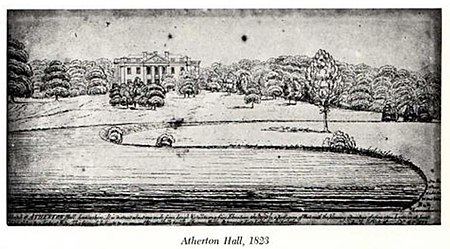Atherton Hall, Leigh
AC with 0 elementsAtherton, Greater ManchesterBuildings and structures demolished in 1824Buildings and structures in Leigh, Greater ManchesterCountry houses in Greater Manchester ... and 3 more
Demolished buildings and structures in Greater ManchesterFormer buildings and structures in EnglandHistory of the Metropolitan Borough of Wigan

Atherton Hall was a country house and estate in Atherton historically a part of Lancashire, England. The hall was built between 1723 and 1742 and demolished in 1824. Christopher Saxton's map shows there was a medieval deer park here in the time of Elizabeth I.
Excerpt from the Wikipedia article Atherton Hall, Leigh (License: CC BY-SA 3.0, Authors, Images).Atherton Hall, Leigh
Long Causeway,
Geographical coordinates (GPS) Address Nearby Places Show on map
Geographical coordinates (GPS)
| Latitude | Longitude |
|---|---|
| N 53.509 ° | E -2.5 ° |
Address
Long Causeway
Long Causeway
M46 0RR
England, United Kingdom
Open on Google Maps









